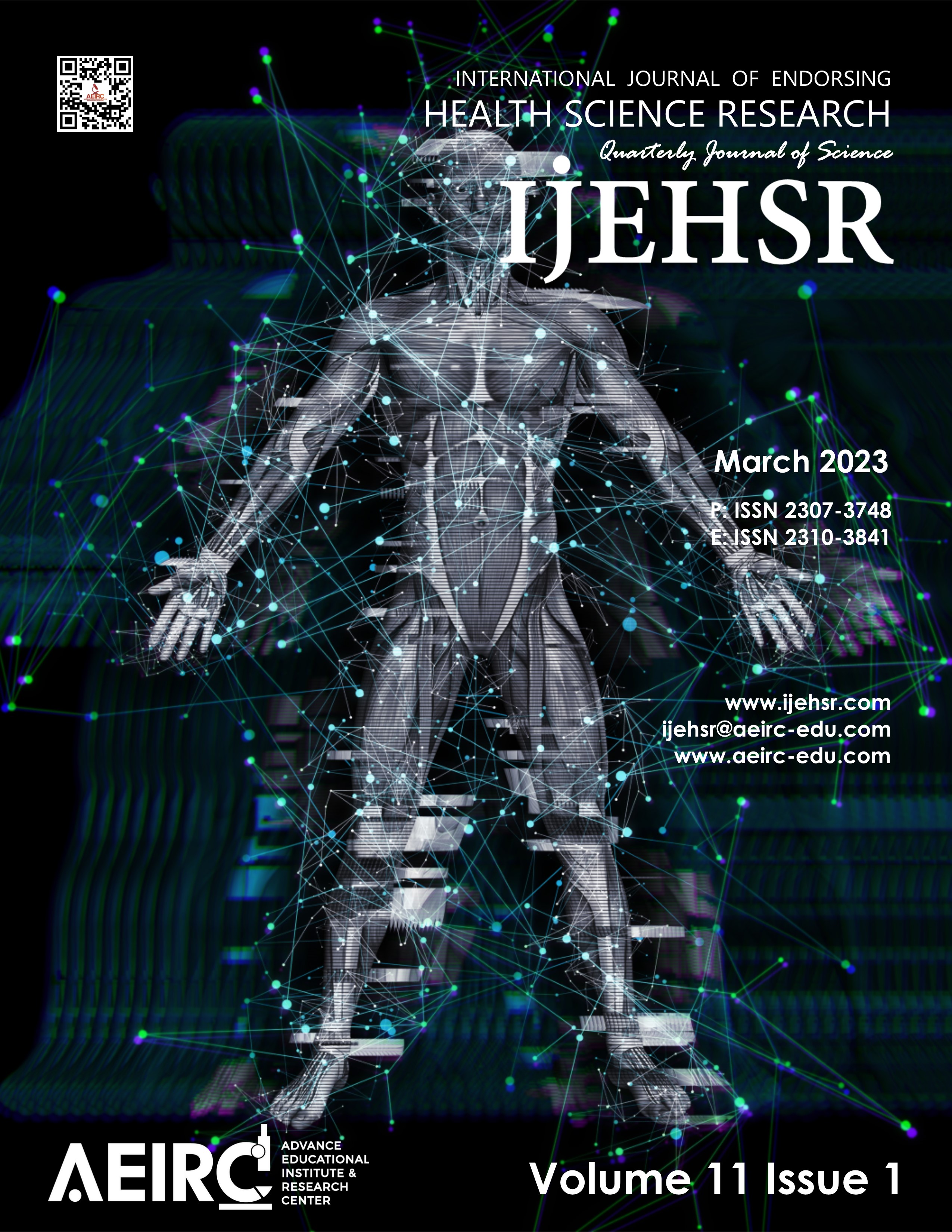Morphometric analysis of fatty liver with the treatment of ginseng root extract
DOI:
https://doi.org/10.29052/IJEHSR.v11.i1.2023.42-53Keywords:
Liver Micrometry, Liver Weight, Liver Size, Hepatic Steatosis, Ginsenoside.Abstract
Background: Metabolic syndrome is the challenge of this era; diseases are initiated with the abnormal functioning liver. This study aims to evaluate the effects of HFD on liver anatomy and to study the morphological changes with its histological findings
Methodology: 50 male albino rats were acclimatized in the animal house of DUHS, divided into 5 groups (GP). GP 1 was on a standard diet for 6 weeks, GP 2 was on HFD for 6 weeks, GP 3, GP 4, and GP 5 were on HFD for 6 weeks. They were treated with ginseng root extract in doses of 100mg/ml, 200mg/ml and 400 mg/ml for 6 weeks. After 12 weeks, GP3, GP4, and GP 5 were dissected, and the liver was isolated for histology and micrometry. Blood was drawn and sent for LFT to correlate morphological changes with enzymes.
Results: Rats on a high-fat diet developed fatty liver with altered LFT. The treated group showed a reversal of changes in morphology and LFT in a dose-dependent manner.
Conclusion: The morphometric analysis revealed that fatty accumulation in liver cells deranges the liver function leading to metabolic syndrome. Ginseng root extract helps in depleting fatty accumulation in the liver.
Downloads
Published
How to Cite
Issue
Section
License
Copyright (c) 2023 The Author(s)

This work is licensed under a Creative Commons Attribution 4.0 International License.







